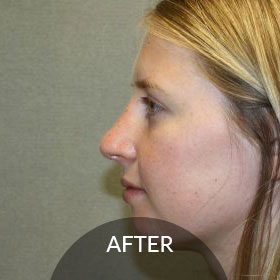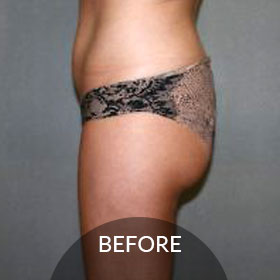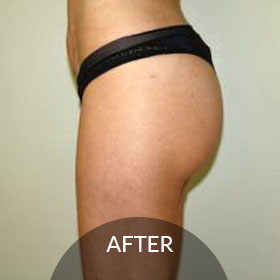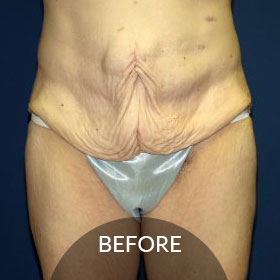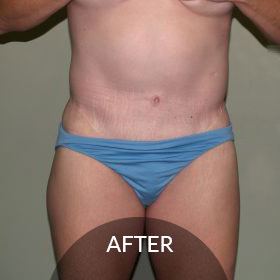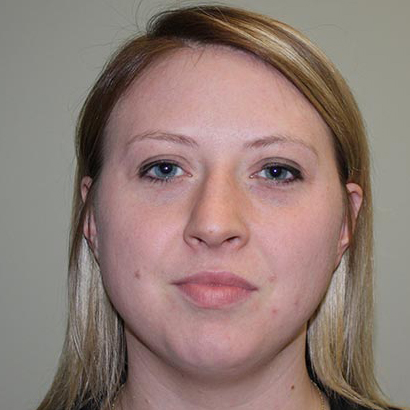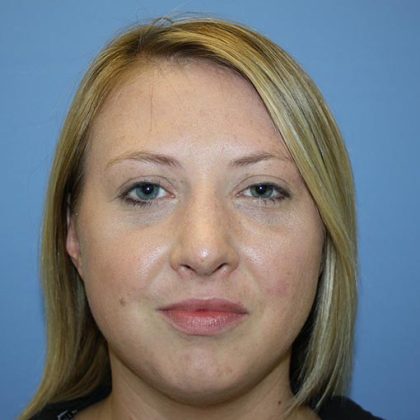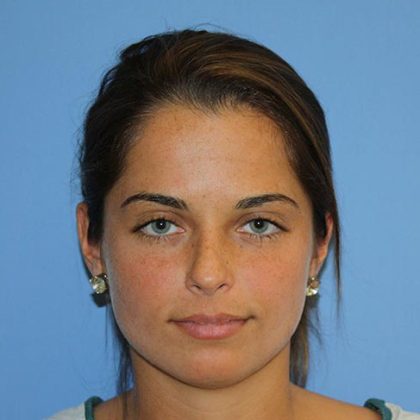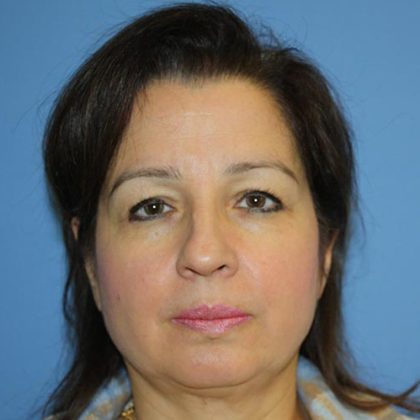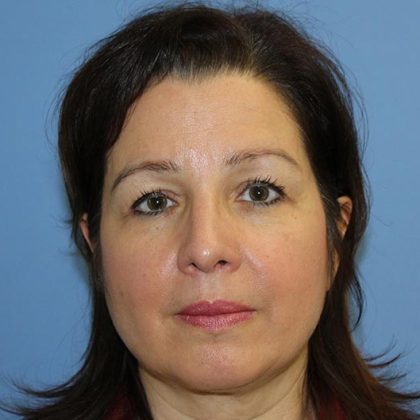Rhinoplasty (Nose Surgery)
Conveniently located to serve the areas of Beachwood and Cleveland, Ohio
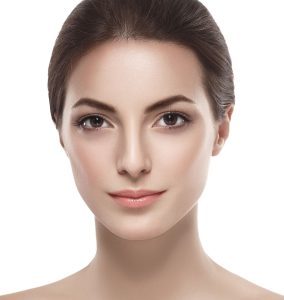
A rhinoplasty, or “nose job”, is a plastic surgery procedure that alters the internal structures of the nose, changing its outward appearance. Rhinoplasty procedures can be purely cosmetic or functional in nature. Or, they can be a combination of the two. In fact, one of the most common reasons people seek the surgery is to alleviate breathing difficulties.
The anatomy of the nose is extremely complex. Because of this, rhinoplasties are widely regarded as one of the most challenging cosmetic surgery procedures to perform.(1) The surgeon must balance sculpting the nose to achieve the desired aesthetic result, while simultaneously preserving the nasal airway.(2) Therefore, surgeons must have an excellent understanding of the nasal structure. However, despite its complexity, the rhinoplasty is among the most popular aesthetic surgeries in the United States.
Dr. Gregory Fedele utilizes his extensive experience as a plastic surgeon and his talent as an artist to deliver a tailored treatment plan to meet your individual needs and goals. Board-certified and published across eight accredited medical journals, he has helped countless patients get the nose they’ve always wanted, and he can help you too. If you’re ready to redefine the appearance of your nose, then contact us today to schedule a free consultation. Our office in Cleveland, Ohio can be reached at (216) 464-1616.
Contents
Before and After Photos
About Nose Jobs
The nose is among the most distinguishing features of a person’s face, and a key component of facial attractiveness.(3) For men, a prominent nose can signify strength and masculinity. While, for women, a daintier nose can complement softer facial features. Although the “ideal” nose shape is subjective, a 2019 study revealed that participants found straight-bridged noses more aesthetically pleasing than convex (curved outward) noses.(4) Interestingly, another study conducted just a year before found that photographs altered digitally to reduce nose size also had a more positive response.(5)
Types of Nasal Surgery
- Functional Rhinoplasty– restores breathing function
- Cosmetic Rhinoplasty – changes the shape of the nose for aesthetic purposes
- Dorsal Hump Reduction/Humpectomy – flattens the bridge of the nose
- Augmentation Rhinoplasty – increases dorsal profile with implants or bone/cartilage grafts
- Nasal Osteotomy/Osteoplasty – straightens a crooked or off-center nasal profile as the result of an injury
- Nasal Base Rhinoplasty – adjusts the angle between the nose and the upper lip
- Alar Retraction – reshapes the outer edges of the nostrils
- Columella Retraction – reshapes the flap between the nostrils
- Tip Plasty – adjusts the configuration of the tip of the nose
- Septoplasty – straightens the bone and cartilage that divides the nostrils
Benefits
A rhinoplasty can provide a range of benefits to the patient.
- – Resculpts the nasal profile for a more streamlined appearance
- – Restores the nasal airway to alleviate breathing problems
- – Helps to resolve symptoms and risks associated with sleep apnea
- – Corrects asymmetry caused by injury or prior surgery
- – Provides aesthetic changes to increase confidence
Candidates
Although most people are able to undergo rhinoplasty surgery, age and health may affect eligibility. It is also important to have realistic expectations of what can and cannot be achieved with nasal surgery. Rhinoplasty is a multifaceted procedure that requires effective planning and adherence to pre and postoperative instructions. Dr. Fedele will determine if you are a viable candidate for a rhinoplasty during your personal consultation.
Personal Consultation
Dr. Fedele will meet you for a personal consultation to get a better understanding of your goals. This interactive session allows for more clarity and communication so you can achieve the results you desire. He will learn about your medical history and nasal anatomy and will discuss the surgical options that would best suit your individual facial features. Dr. Fedele also has advanced digital computer imaging that can show you a simulated image of your new nose. He will use this wealth of information to create a personalized treatment plan.
Preparation
Dr. Fedele and our team will make sure that you are comfortable, prepared, and fully informed before and after your procedure. We’ll make sure you know exactly what to expect at every stage of the process. In the days leading up to your procedure, you will be asked to refrain from the use of alcohol, tobacco, and over-the-counter pain medications that thin the blood, such as aspirin or ibuprofen. Be sure to inform us about any dietary supplements you are taking, as you may also have to cease their use until otherwise directed.
Procedure
The surgical methods Dr. Fedele uses depend on each patient’s nasal anatomy and aesthetic goals. You will be administered general anesthesia for the procedure. Dr. Fedele uses an open or closed surgical method, depending on the treatment plan. While he generally prefers the closed method – since it does not produce a visible scar – it is not always the best option for some patients.
Closed Rhinoplasty
During a closed rhinoplasty, all of the incisions are made within the nose – resulting in no visible scarring. Once the incisions are made, Dr. Fedele separates the soft tissue from the bone and cartilage. From there, the nasal bone will be fractured if the nose is being reduced in size, or grafts will be applied if the nose is being increased in size. The closed method is effective for addressing breathing problems and size alterations.
After the operation is completed, you will be taken to the recovery room to rest while the anesthesia wears off. Once ready, you will be able to return home – usually the same day of the operation. For your safety, we ask that you arrange transportation to and from your surgery with a trusted adult.
Open Rhinoplasty
During an open rhinoplasty, Dr. Fedele makes an incision across the columella (the tissue between the nostrils) and lifts the skin and underlying tissue up and back from the tip of the nose to expose the bone and the cartilage. Whether augmenting or reducing the nose, the open method provides excellent access. This method leaves a scar on the columella, however, it is hardly noticeable and becomes virtually invisible over time.
Recovery & Results
Your nose will be protected and supported with a splint on the exterior and packing in the nostrils. There will be swelling and bruising around the nose and eyes. Dr. Fedele will prescribe medication to alleviate discomfort and reduce the swelling. You will need to keep your head elevated while you sleep for the first 7-10 days.
The recovery timeframe will vary from patient to patient. While you are recovering from the procedure, it is important to avoid all strenuous activities and anything that could result in trauma to your nose. You must avoid blowing your nose entirely for the first week. After this period, your splint will be removed. The swelling, however, will persist. This is a normal part of the recovery process, so it is important to be patient. It will take around six months for the nose to fully heal after a rhinoplasty. Swelling may return during this time, particularly at night. However, when the healing is finished, you will see your final results.
Cost of a Rhinoplasty in Cleveland, OH
The cost of a rhinoplasty depends on the specifics of the treatment. Procedures to correct airflow issues or trauma due to injury may be more involved than purely cosmetic surgeries. Qualified patients may be eligible for financing. Dr. Fedele will be able to give you an accurate estimate for your procedure after your personal consultation. Contact us today to schedule your appointment at our Beachwood, OH office by calling (216) 464-1616.
FAQ
How long is a rhinoplasty procedure?
Most rhinoplasties are no longer than 3 hours, though it depends on the techniques used and patient anatomy. Some rhinoplasties can be completed in under 2 hours.
Are rhinoplasties covered by insurance?
Insurance companies will often cover rhinoplasties when they are functional. Examples of functional rhinoplasty include restoration of breathing function in the nose or reconstructive surgeries following injury. The best way to find out what is covered is to contact your insurance provider directly.
What happens if I don’t like my rhinoplasty results?
Rhinoplasty healing is less predictable than most other facial surgeries. As such, there may be some incongruencies in results. When a patient is dissatisfied with the shape of their nose after surgery, it is advisable to wait a full year before seeking revision rhinoplasty surgery. This is because it can take several months for swelling to subside, and tissues to settle. After this period, patients may inquire about a revision surgery.
References
- Halepas S, Lee KC, Castiglione C, Ferneini EM. Grafting in Modern Rhinoplasty. Oral and Maxillofacial Surgery Clinics of North America. 2021;33(1):61-69. doi: 10.1016/j.coms.2020.09.003. https://www.sciencedirect.com/science/article/abs/pii/S1042369920300807?via%3Dihub
- Swartout B, Toriumi DM. Rhinoplasty. Current Opinion in Otolaryngology & Head and Neck Surgery. 2007;15(4):219-227. doi: 10.1097/MOO.0b013e32825ea2d8. https://journals.lww.com/co-otolaryngology/Abstract/2007/08000/Rhinoplasty.6.aspx
- Belinfante LS. History of Rhinoplasty. Oral and Maxillofacial Surgery Clinics of North America. 2012;24(1):1-9. doi:10.1016/j.coms.2011.10.002
- Cankaya OS, Celebi F, Bicakci AA. Effects of different nose types on class II treatments for female patients. Progress in Orthodontics. 2019;20(1). doi:10.1186/s40510-019-0296-7
- Przylipiak M, Przylipiak J, Terlikowski R, Lubowicka E, Chrostek L, Przylipiak A. Impact of face proportions on face attractiveness. Journal of Cosmetic Dermatology. 2018;17(6):954-959. doi:10.1111/jocd.12783





